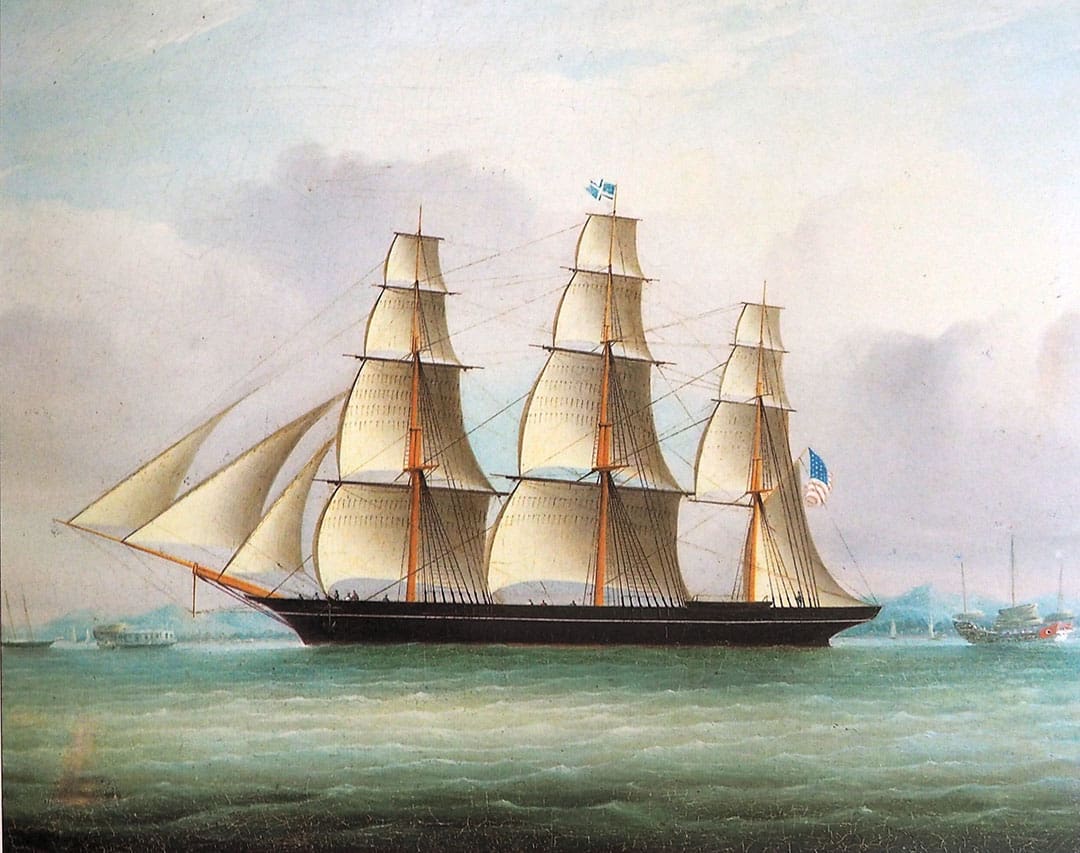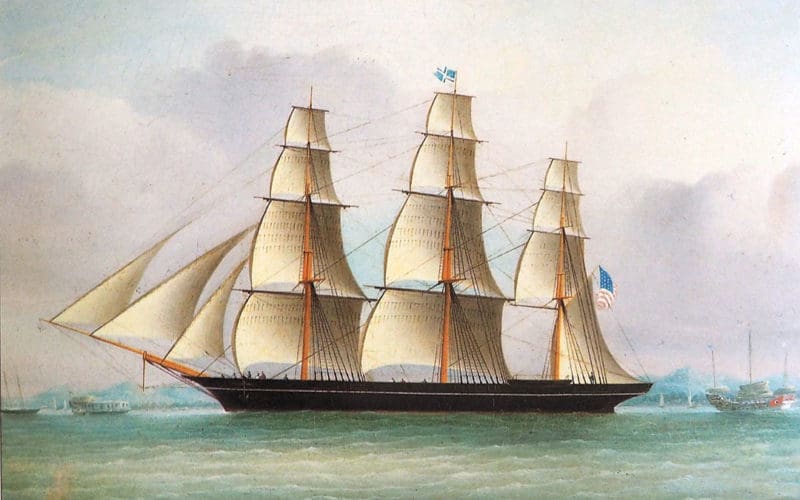
Although it wasn’t the first clipper ship to be designed and built in New York, Sea Witch is one of the ships that marks the advent of the great clipper ship era in America. During a relatively short period of time, from the mid 1840s to perhaps a decade later, the rise of naval design, as evidenced in the design of clipper ships, transformed American shipping, propelling American ship design into world preeminence.
All of this primarily occurred in just two places: Boston and New York. In Boston Donald McCay was making a name for himself with ships like Stag Hound, Sovereign of the Seas, Westward Ho and, of course, the great Flying Cloud. In New York John Willis Griffiths, was perhaps the first to approach the subject of ship design with a mathematical scientific approach, as evidenced by his design of Sea Witch.
Griffiths’ radicalized ship design by rejecting the prevailing concept of “a cod’s head, mackerel tail” shape of a ship that the British used for genrations, excellent for cargo-carrying but deficient in speed.
Griffiths’ design hollowed out the bows, narrowed the stern and had fine runs aft; his ships would be fast. The first of these ships, Rainbow, was built for the China trade. The owners delayed Rainbow’s completion for more than a year, beleiving it would be a disaster.
Rainbow was launched in 1845, departed for China and returned to New York in a record time of seven months, 17 days for the round trip.
It was Griffiths next design, Sea Witch, that cemented his reputation. Built in 1846, Sea Witch, was the gold standard of the clipper ship era. Designed to carry porcelain and tea, Sea Witch was 192 feet LOA with a 43-foot beam and a main mast 140 feet tall.
In March of 1849 Sea Witch, with Capt. Robert Waterman in command, sailed into New York from Hong Kong two weeks before it was expected. A 14,000-nautical mile passage in 74 days and 14 hours, a record so substantial it was only eclipsed by a multihull sailboat in 2003.
It was just one of many fast passages. Sea Witch went on to earn its owners substantial profit.
When gold was discovered in California, Sea Witch established the short-lived record from New York to San Francisco of 97 days, the first vessel to do so in less than 100 days. In 1854, that record was beaten by Flying Cloud, which made the passage in 89 days, 8 hours.
By the end of the 1850s, Sea Witch was consigned to carrying steerage passengers from China to Cuba. The clipper ran aground off Havana in 1856.
Let’s join Captain Waterman for a noon sight aboard Sea Witch. It is February10 (use the 2022 almanac) and Sea Witch is bound for New York. The height of eye is 20 feet and Waterman is taking an upper limb sight of the sun as it crosses his meridian. The DR puts the ship at S 25° 22’ by W 18° 25’. The Hs of the sun is 79° 18’.
A. What is the time of meridian passage?
B. What is the Ho?
C. What is the latitude?
Answers:
A. Meridian passage is 13:27:40 GMT
B. Ho is 78° 57.4’
C. Latitude is S 25° 17.3’

